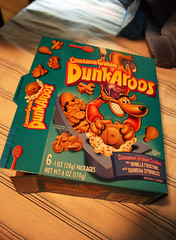
For those of us who did not grow up in consistently temperate climates, our parents faced a serious conundrum: how to drain us of our boundless energy when the outdoor playgrounds were buried under six feet of snow or consumed by a mighty hurricane? Without the benefit of outside space with major running-around space capacity, it was difficult to sufficiently tire a kid out in time for naptime. What's an exhausted and weather-beaten parent to do?
Luckily, enterprising child-minded 90s entrepreneurs had the answer: indoor play places. In these colorful, kid-friendly enclosed playgrounds, masses of children had the opportunity to run wild to their hearts' collective content. Parents, by lucky virtue of their inability to fit in those constrictive plastic crawl tubes, were mercilessly spared and allowed to sit back and relax from the observation area. Overall, a win-win situation.
All it took was a quick removal of shoes to be stored in the play place cubbies and we were generally good to go. Crawling spaces, climbing ropes, ball pits, and slides awaited us at every visit, turning these indoor play spaces into popular venues for birthday parties and playdates. While their appeal waned in the late 90s and many chains merged and eventually filed for bankruptcy, I'd like to remember them as they were: chaotic, germ-ridden, and filled with screaming children. At least we have our memories.
Discovery Zone
For a brief period in the early-to-mid 90s, DZ play places were a major force, opening centers in cities across the US. These self-proclaimed "indoor fitness centers" for children boasted an array of climbing, swinging, and sliding apparatuses. Perhaps DZ got a bit greedy, as their haste in opening venue after venue left them in a relatively dire financial situation. In 1996, the company filed for bankruptcy, inspiring the more dominant Chuck E. Cheese to quickly gobble up DZ franchises. By the end of the decade, Discovery Zones were but a brief memory to most 90s children.
Despite their short-lived popularity, many of us still remember the colorful commercials and catchy jingles that impelled us to beg our parents for what we considered to be our right to Discovery Zone time. Though the company failed to live up to their self-generated hype over time, for a time their slogan was right on: "Where kids want to be." Or, perhaps more appropriately, "Where fed-up and exhausted parents want to bring them."
Chuck E. Cheese
Among the few free-standing play place chains to cross over to the new millennium, Chuck E. Cheese's aptly cheesy concept has served them well over the years. Despite the undeniably frightening full-size animatronic mouse music show accompanying their signature sit-down pizza meal, Chuck E. Cheese has enjoyed relative success in the children's entertainment industry for over 30 years. Aside from the standard climbing equipment and ball pits, the chain also featured a sizable arcade stocked with standard fare. You've got to commend their multi-faceted approach at entertaining young consumers, but those giant singing mice are essentially unforgivable. They will haunt your dreams.
McDonalds PlayPlace

Some of today's savvier and consumer-minded children may be appalled to know some of us actually held birthday parties at (gasp!) McDonalds, but back in the late 80s and early 90s the novelty of these indoor PlayPlaces made them an attractive venue for children's celebrations. The relative cheapness of McDonalds' PlayPlaces in comparison to stand-alone chains like Chuck E. Cheese lured in budget-conscious parents. We may not have known what was in the Chicken McNuggets (suspiciously not containing all-white meat chicken breasts until a few years ago, leading me to suspect they once potentially contained shoes and tire remnants) but we knew one thing: PlayPlaces are free, Chuck E. Cheese costs money. Done deal.
Leaps and Bounds

McDonalds Corp knew they couldn't give it all away for free though--especially not when they saw their PlayPlace competitors raking in the big bucks from their pay-for-play centers. In 1991, McDonalds opened the pilot "Leaps & Bounds" center in an 11,000 square foot strip mall space Naperville, IL. The experiment was short-lived--the chain merged with the now-defunct Discovery Zone a few years later--but it was fun while it lasted.
Circus Pizza/Showbiz Pizza
These chains were somehow linked to the Chuck E. Cheese empire, though my research skills are a bit too hazy (read:lazy) to tell you exactly how. They featured the same basic Chuck E. Cheese prototype: arcade, ball bit, climbing zone, pizza, freaky animatronic performers. In case your memory needs some dusting off, here's a brief refresher course in the terrifying singing puppets: they were called the Rock-afire Explosion and you can see them in all of their horrific glory in the video above. Watch at your own risk: those things are creepy.
These play places varied significantly by region, so I imagine many of you grew up with different chains. Feel free to wax poetic in the comments section about your favorite mangy ball pit or sandbox station. These centers were popping up everywhere in the 90s, sometimes in the least expected places. Here, I'll get things started: my personal favorite was my family's annual stop at Grand Casino Hinckley in Minnesota--it may not sound like much of a place for children, but they had the play place to trump all other small-town isolated casino play places. To this day when I enter a casino, my instinct is not to sit down at the blackjack table but rather to ask the concierge for directions to the on-site enclosed play place. Screw slot machines: I want crawling tubes.
Okay, now it's your turn. Knock yourself out. Not literally, though. We don't have a brain-cushioning ballpit or recycled-tire floor here to break your fall.







